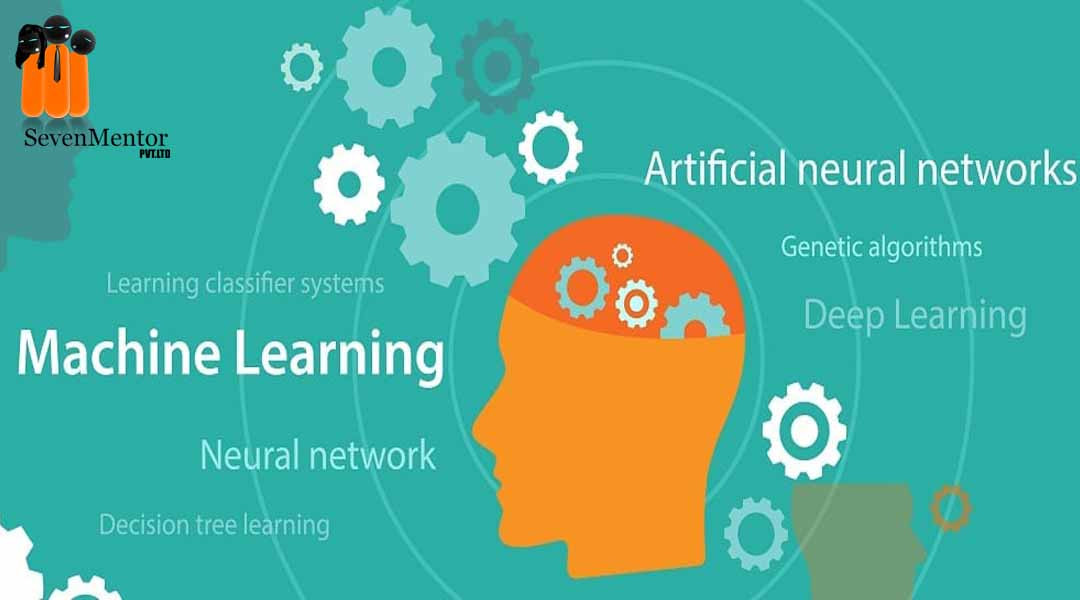What is the difference between deep learning and usual machine learning?
The main differences between deep learning and traditional machine learning lie in the architecture of the models and the feature representation:
Model Complexity:
Traditional Machine Learning: Traditional machine learning models typically involve the manual extraction of relevant features from the input data. Algorithms like decision trees, support vector machines, and k-nearest neighbors work with these handcrafted features.
Deep Learning: Deep learning models, on the other hand, use neural networks with multiple layers (deep neural networks). These models automatically learn hierarchical representations of the data, eliminating the need for explicit feature engineering.
Feature Representation:
Traditional Machine Learning: In traditional machine learning, features are engineered based on domain knowledge or through a trial-and-error process. The performance of the model is highly dependent on the quality of these handcrafted features.
Deep Learning: Deep learning models learn feature hierarchies from raw data. The network automatically discovers relevant features at different levels of abstraction, potentially capturing complex patterns and relationships within the data.
Data Dependency:
Traditional Machine Learning: Traditional machine learning algorithms may require a substantial amount of feature engineering to perform well, and their performance can be limited by the quality and relevance of the chosen features.
Deep Learning: Deep learning models can automatically learn intricate representations from raw data, making them more data-driven and capable of handling high-dimensional inputs without extensive manual feature engineering.
Task Complexity:
Traditional Machine Learning: Traditional machine learning is effective for a wide range of tasks, including classification, regression, clustering, and dimensionality reduction.
Deep Learning: Deep learning excels in tasks that involve large amounts of data and complex patterns, such as image and speech recognition, natural language processing, and tasks where hierarchical feature representations are beneficial.
Training and Computation:
Traditional Machine Learning: Training traditional machine learning models can often be done on standard hardware, and the computational requirements may be relatively modest.
Deep Learning: Training deep neural networks, especially large ones, can be computationally intensive. Graphics Processing Units (GPUs) or specialized hardware are commonly used to accelerate the training process.
Read More...https://bit.ly/3NI3dCT
The main differences between deep learning and traditional machine learning lie in the architecture of the models and the feature representation:
Model Complexity:
Traditional Machine Learning: Traditional machine learning models typically involve the manual extraction of relevant features from the input data. Algorithms like decision trees, support vector machines, and k-nearest neighbors work with these handcrafted features.
Deep Learning: Deep learning models, on the other hand, use neural networks with multiple layers (deep neural networks). These models automatically learn hierarchical representations of the data, eliminating the need for explicit feature engineering.
Feature Representation:
Traditional Machine Learning: In traditional machine learning, features are engineered based on domain knowledge or through a trial-and-error process. The performance of the model is highly dependent on the quality of these handcrafted features.
Deep Learning: Deep learning models learn feature hierarchies from raw data. The network automatically discovers relevant features at different levels of abstraction, potentially capturing complex patterns and relationships within the data.
Data Dependency:
Traditional Machine Learning: Traditional machine learning algorithms may require a substantial amount of feature engineering to perform well, and their performance can be limited by the quality and relevance of the chosen features.
Deep Learning: Deep learning models can automatically learn intricate representations from raw data, making them more data-driven and capable of handling high-dimensional inputs without extensive manual feature engineering.
Task Complexity:
Traditional Machine Learning: Traditional machine learning is effective for a wide range of tasks, including classification, regression, clustering, and dimensionality reduction.
Deep Learning: Deep learning excels in tasks that involve large amounts of data and complex patterns, such as image and speech recognition, natural language processing, and tasks where hierarchical feature representations are beneficial.
Training and Computation:
Traditional Machine Learning: Training traditional machine learning models can often be done on standard hardware, and the computational requirements may be relatively modest.
Deep Learning: Training deep neural networks, especially large ones, can be computationally intensive. Graphics Processing Units (GPUs) or specialized hardware are commonly used to accelerate the training process.
Read More...https://bit.ly/3NI3dCT
10:52 AM - Jan 13, 2024 (UTC)
What is Software Testing?
Software testing is a process of evaluating and verifying that a software application or system meets specified requirements and functions correctly. The primary purpose of software testing is to identify errors, defects, or bugs in the software so that they can be fixed before the software is released to end-users or customers.
Key goals of software testing include:
Ensuring Quality: Software testing helps ensure that the software meets quality standards and performs as expected. It aims to deliver a product that satisfies user requirements and is free from critical defects.
Validation and Verification: Testing validates that the software meets the specified requirements and verifies that it functions correctly. Validation ensures that the right product is being built, while verification ensures that the product is being built correctly.
Error Detection and Correction: Testing helps identify errors or defects in the software. Once defects are ide
Software testing is a process of evaluating and verifying that a software application or system meets specified requirements and functions correctly. The primary purpose of software testing is to identify errors, defects, or bugs in the software so that they can be fixed before the software is released to end-users or customers.
Key goals of software testing include:
Ensuring Quality: Software testing helps ensure that the software meets quality standards and performs as expected. It aims to deliver a product that satisfies user requirements and is free from critical defects.
Validation and Verification: Testing validates that the software meets the specified requirements and verifies that it functions correctly. Validation ensures that the right product is being built, while verification ensures that the product is being built correctly.
Error Detection and Correction: Testing helps identify errors or defects in the software. Once defects are ide
12:07 PM - Dec 06, 2023 (UTC)
Sponsored by
OWT
7 months ago




